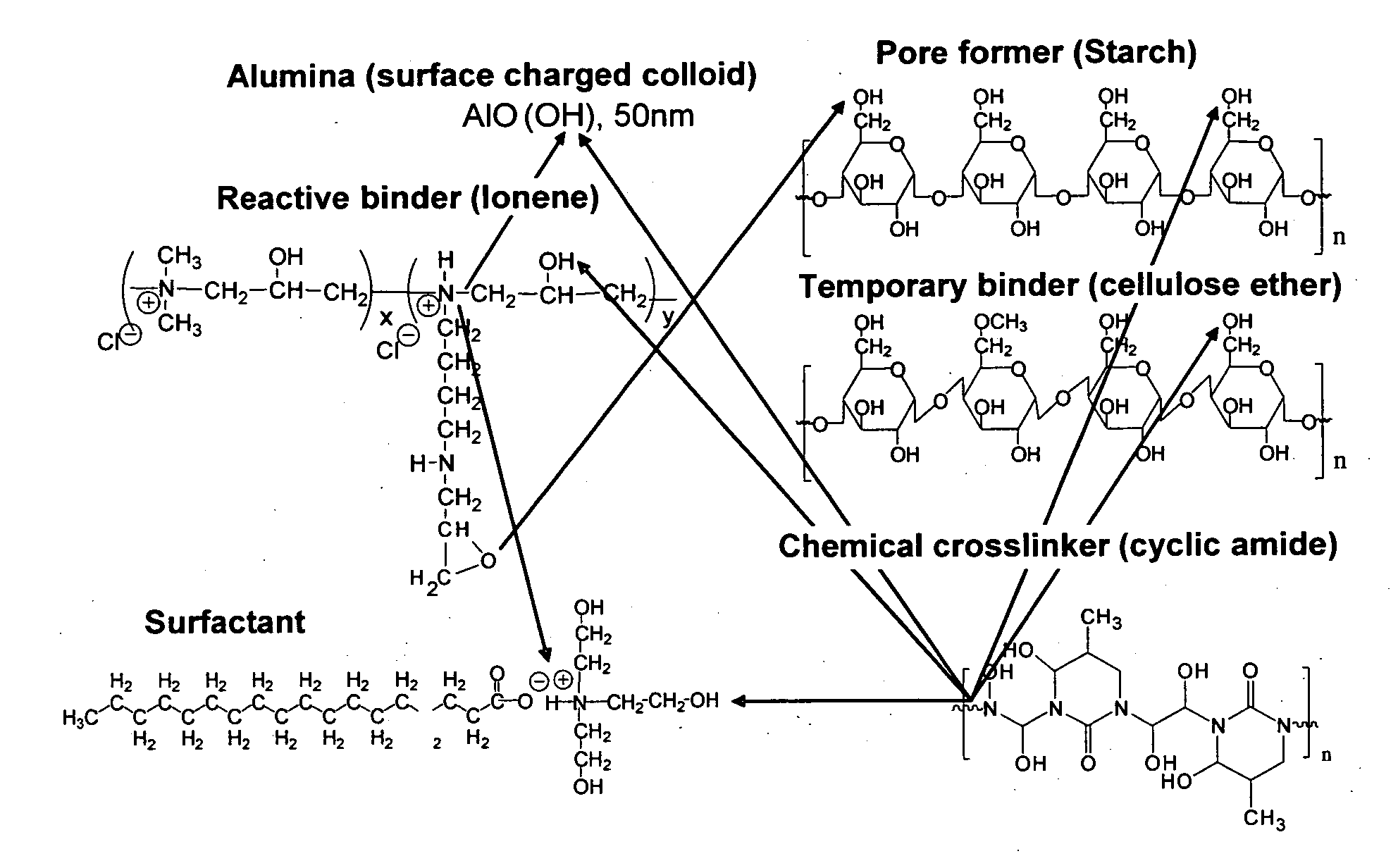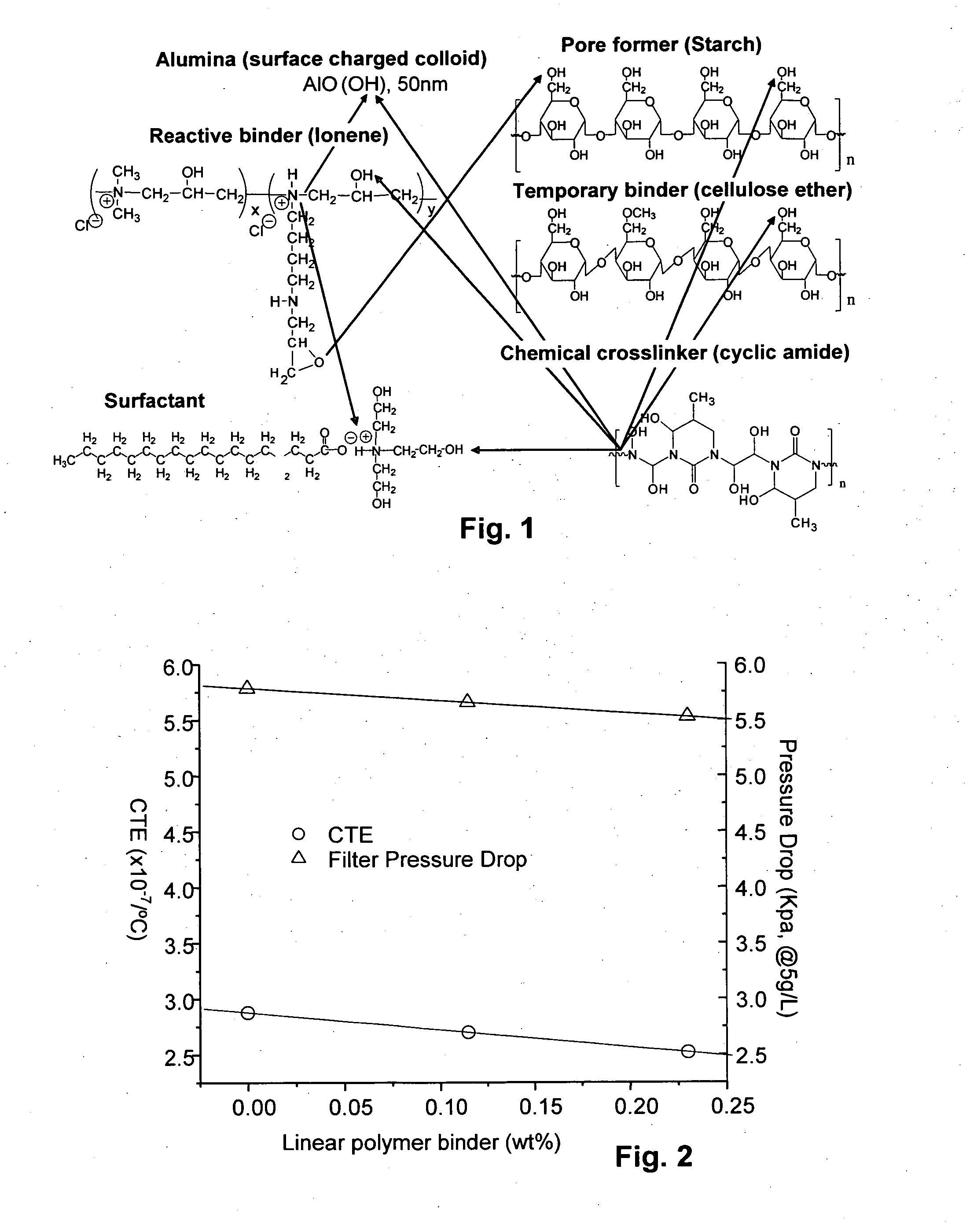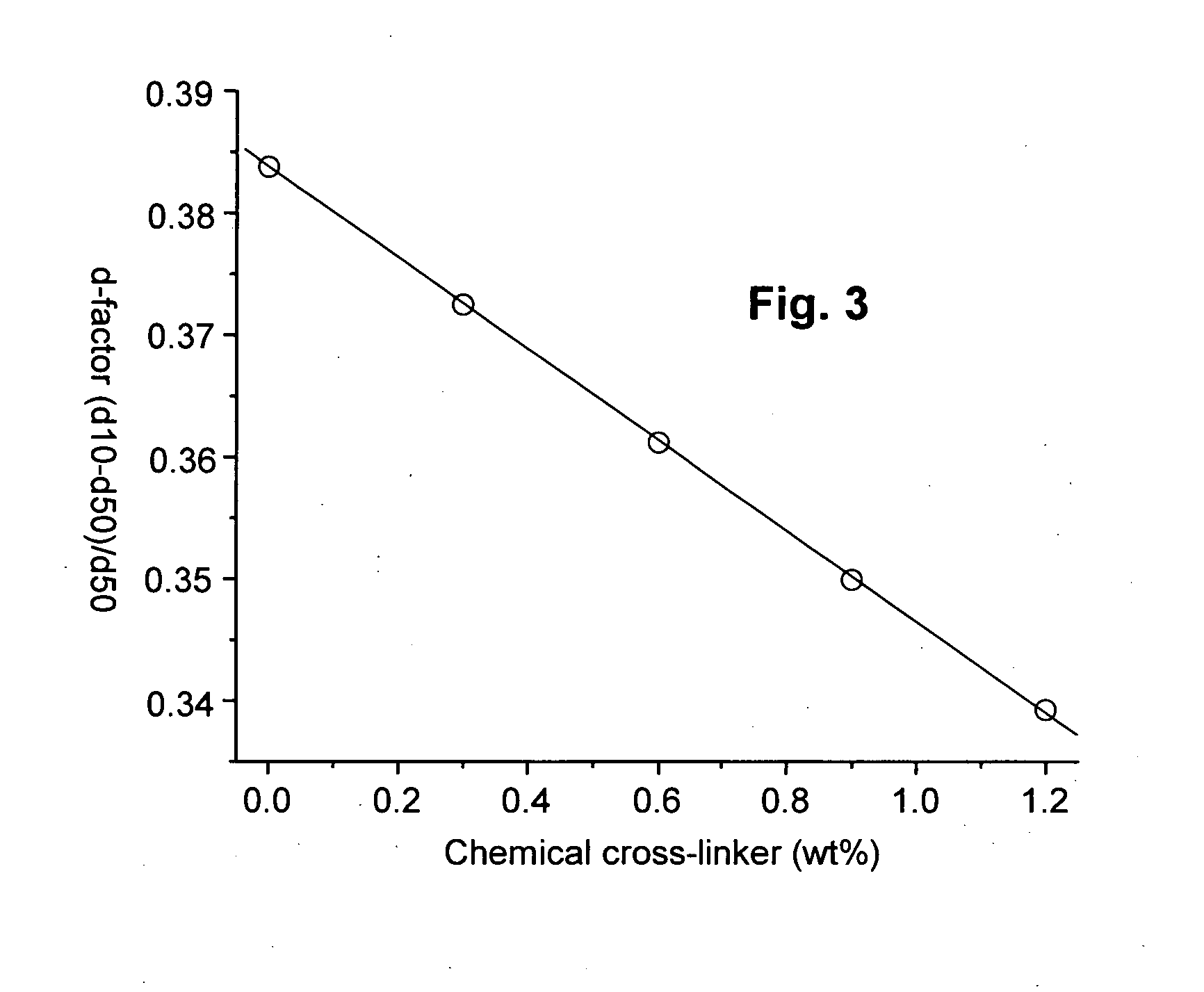Reactive binders for porous wall-flow filters
a technology of porous wall and filter, applied in the field of porous ceramic filter, can solve the problems of limited interaction between these various constituents during mixing and drying, and achieve the effects of uniform pore size, low thermal expansion, and high strength
- Summary
- Abstract
- Description
- Claims
- Application Information
AI Technical Summary
Benefits of technology
Problems solved by technology
Method used
Image
Examples
Embodiment Construction
[0017] In traditional batching systems for the manufacture of ceramics via reaction sintering there is little chemical interaction between the reactive binder components and the base batch components of the batch. The base batch components ordinarily react only at high temperatures and after the removal of reactive binder components, and the latter typically undergo little interaction with each other or with the inorganics during the batch mixing and drying steps of manufacture. Thus the dried greenware is generally a simple physical mixture of inorganic and reactive binder components.
[0018] The use of reactive binder components in accordance with the invention affects the manufacturing process in a number of ways. In the presence of a linking reactive organic binder component, for example, the organics and inorganics may interact with each other via cross-linking at temperatures significantly below sintering temperatures, and the organics may react extensively with each other duri...
PUM
| Property | Measurement | Unit |
|---|---|---|
| weight percent | aaaaa | aaaaa |
| mean pore size | aaaaa | aaaaa |
| mean pore size d50 | aaaaa | aaaaa |
Abstract
Description
Claims
Application Information
 Login to View More
Login to View More - R&D
- Intellectual Property
- Life Sciences
- Materials
- Tech Scout
- Unparalleled Data Quality
- Higher Quality Content
- 60% Fewer Hallucinations
Browse by: Latest US Patents, China's latest patents, Technical Efficacy Thesaurus, Application Domain, Technology Topic, Popular Technical Reports.
© 2025 PatSnap. All rights reserved.Legal|Privacy policy|Modern Slavery Act Transparency Statement|Sitemap|About US| Contact US: help@patsnap.com



